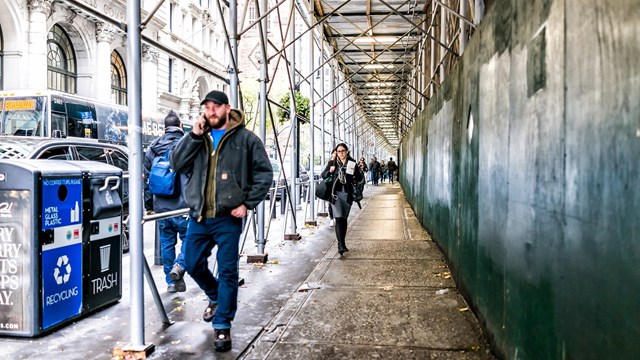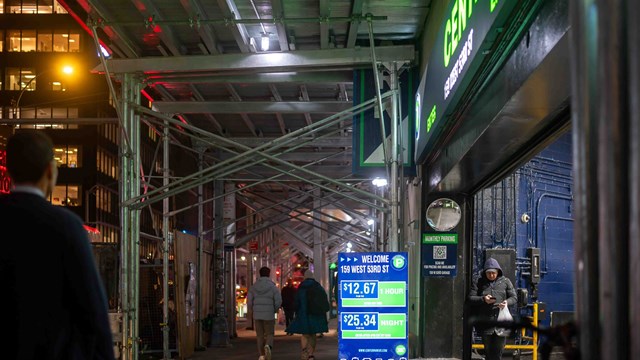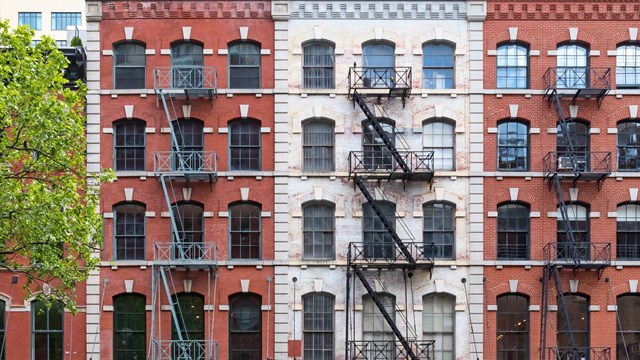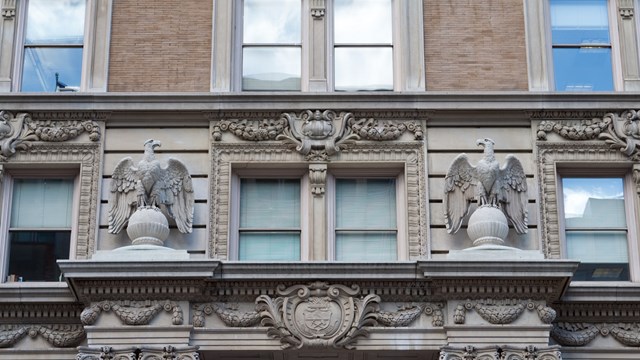In an ideal world, every New York City building owner, manager, condominium association, and co-op board issued a Safe with a Repair and Maintenance Program (SWARMP) notice for exterior defects during their previous Facade Inspection and Safety Program (FISP) - also known as. Local Law 11 - cycle would repair those defects within the five year interval before the next required filing cycle.
But for dozens of reasons, many of those in charge of building operations decisions see a SWARMP certification as a five-year pass, rather than a call to action. By the time the inspection cycle rolls around again, environmental elements, thermal expansion and contraction, predictable simple wear-and-tear, and old age often exacerbate those relatively minor façade issues, turning them hazardous.
Facade problems don’t go away - they simply get worse, and more expensive to fix. So what could have been a series of relatively inexpensive repairs made over time are now urgent, and require additional inspections from a licensed engineer who has to carefully access the challenged façade(s) on a suspended scaffold, accompanied by a contractor and staff, all of whom are being paid on an hourly basis. Their mission will be to conduct a hands-on inspection and take photos of the façade, spanning every 60 feet horizontally - think selfies against brick backgrounds, inevitably followed by a costly installation of the ubiquitous sidewalk shed, and then actual repairs made over a protracted period of time. All of this could have been avoided by implementing repairs and maintenance within a very forgiving five-year period to determine costs, assessments, and best procedures.
The following are some six-month, plan-ahead actions that can help, as well as some possible processes.
Consult With an Experienced Engineer/Architect
Six months before your next FISP inspection, start vetting exterior consultants. You want to select someone who is highly rated by industry associations and has a specific history with facade restoration, maintenance, and preservation. A good rapport is important, too, since you will be working with them throughout the project. You are the client, so it is critical for boards and associations to feel comfortable asking tough questions and making sure the contract is equitable for all parties.
Choose a Reputable Exterior Contractor
Once the engineer and/or architect is retained for the façade inspection – and the inspection only – ask for references to contractors. Before making a final selection, take the time to evaluate the contractor’s certificate of insurance listed on the ACCORD form and make sure they have the appropriate insurance coverage. At the same time, start getting cost estimates for the scaffold rigging and hourly rates. It is a highly competitive landscape.
Apply for Work Permits Early
Immediately after the inspection, reach out to the exterior consultants and make sure they start the permit filing process pronto! The Department of Buildings (DOB) is a bureaucratic agency that is inundated with requests, as is the Landmarks Preservation Commission (LPC), if your building additionally holds that designation. The sooner the paperwork is in, the sooner the work may begin.
Unsafe? Get a Sidewalk Shed Up Fast!
In the event your exterior consultant has identified unsafe conditions on your property, obtain written proposals for the overhead sidewalk shed protection through the contractor - and make a decision quickly!
If the DOB deems you are not moving fast enough, they will erect their own sidewalk sheds, which will add approximately 30% to your costs. And not only will you be paying for installation and removal, the DOB charges monthly leasing rates that are often three times higher than private companies!
Brick, Mortar Color, & Caulking Matching
Once the scope of the work has been determined, blueprints for the repairs prepared, and permits filed, the next step is to match the new bricks and other façade materials to the existing ones in order to maintain the aesthetic integrity of your building. If your building has landmark status, the types of brick and other façade materials to be used in the repair will need to be vetted by the LPC. This agency has been known to require actual do-overs of completed façade repair programs if they do not meet landmark standards.
At the very earliest stages, require your contractor to provide multiple samples of façade materials, including pigmented mortar and caulking colors. Keep in mind that texture is critical too, so lean on your property manager, engineer, architect, and contractor to help guide these decisions and order all the needed materials in a timely fashion.
Be a Good Neighbor!
Because the DOB requires sidewalk sheds at buildings 100 feet tall and higher to extend along the property line and 20 feet into adjacent properties, the buildings neighboring yours are going to be impacted. Sidewalk sheds are an inevitable part of life in New York City, but nevertheless, many neighbors do not take kindly to the loss of light and other impediments sheds can cause, especially for ground floor retail tenants.
In addition, if the building next door is lower in height than yours, your contractor’s team will need access to the neighboring roof to install protective measures on the property before they can begin making repairs on the contiguous walls. It is not uncommon for the owners of neighboring buildings to charge hefty fees for roof access, and there are no rules limiting those fees. In these circumstances, the sooner your neighbor is apprised of the impending work, the more time for equitable negotiations.
Green Light!
Since exterior repair work cannot be done in temperatures below freezing, during high winds, or under very wet conditions, you can count on repairs to take between six and 18 months, depending on the size of the building and nature of the repairs. Once completed, make sure your engineer contacts the DOB immediately to schedule the final inspection, which itself can take four to six months. When you have received a green light for final inspection, and the work has been certified by a qualified engineer or architect, you can start making arrangements with the sidewalk shed company for removal of the shed - which may also take a few weeks or months, depending on their schedules and availability.
At this juncture, your building should be deemed ‘safe’ - but be prepared for the cycle to begin again in five years. Next time, if by some unfortunate chance you again receive a SWARMP notice, don’t wait for the inevitable. Rather, set up a long-term repair program, scheduling interim façade repairs incrementally. Doing so may save your community a considerable amount of money, as well as a lot of unnecessary aggravation. The fact is: you can’t ‘re-SWARMP!’ But the folks in charge of your building still have the opportunity to make better choices to alleviate existing façade problems and, hopefully, mitigate the costs of repairing them.
Wayne Bellet is President of Bellet Construction, a firm based in New York City since 1918 specializing in exterior construction, including roofing, waterproofing, concrete repair, and facade restoration. He can be reached at info@BelletConstruction.com.










2 Comments
Leave a Comment